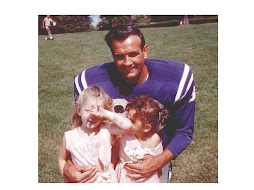Then we entered Auschwitz-the first concentration camp built on the site. Today, all Polish students must visit Auschwitz as part of their studies, the Polish nation is steadfast in their determination to "Never Forget". In addition, you must see the museum with an official guide (with a mandatory visit to Birkenau included) which translates into a minimal visit of 4 hours. Out guide said in year's past, tour guides would rush their bus-loads of visitors through in under 30 minutes, making a mockery of the stop. I was gladdened to hear of this approach.
The museum has remained largely unchanged for many years, the impact relies primarily on the stark reality of what the place was and how it functioned. Just seeing the well known gates put a chill in my heart. I think what struck me most about this portion of the tour was just how detailed the Nazis were about their plans to build a "Master Race" and the depth to which they used psychological manipulation to maintain control. I was also moved by the survival instincts and tactics developed that allowed for some escapes, a few testimonials, a some small degree of spiritual solace if even for a few days/weeks for the many who did not survive. I can honestly say that no book, movie, photograph or lecture (even the two I heard Elie Wiesel deliver) do justice to the horror of Auschwitz-Birkenau. Particularly moving was the barrack that simply displayed mountainous piles of the everyday belongings stripped from the concentration camp victims: shoes, glasses, and of course hair...
 |
| Firing Wall at Auschwitz |
After that, I was extremely grateful if was past lunch time and we could all sit and catch our breath. I felt drained and assaulted though I knew even worse coming. For a moment, I did wonder what it was like for those generous, kind Polish women who served borscht, potato pancakes, cabbage salad and perogies with smiles for the millions who visit this site every year. But I didn't have much time to wonder as soon we were off again for the short trip to Birkenau.
 |
| Skeletons at Birkenau |
 For most, Auschwitz is the name associated with the largest, most deadly concentration camp but in reality, the Birkenau portion of the camp was significantly larger and more horrific. The first thing that struck me as I entered the camp was the enormity. The prison stretched on and on and on. Where the buildings at Auschwitz were brick, those at Birkenau were built rapidly to accommodate the massive influx of workers and were of highly degradable wood. As a result, little remains of most of the camp beyond the brick chimneys which leaves an eerie "skeletal" monument. At this point, the day's perpetual gray skies turned to rain and the infamous Birkenau "mud" appeared almost immediately. It seemed a fitting backdrop as we walked the final length down the railroad tracks that had been built to allow direct delivery of Jews and other undesirables directly to the crematoria. Slowly the remains of the crematoria came into focus-the buildings have been left as the pile of rubble created when the Nazis blew them up as the war was ending, attempting to disguise their crimes. While there is an "official" monument, for me I paid final tribute to the 6 million Jews and 5 million more as I walked slowly around this crumbled pile of bricks.
For most, Auschwitz is the name associated with the largest, most deadly concentration camp but in reality, the Birkenau portion of the camp was significantly larger and more horrific. The first thing that struck me as I entered the camp was the enormity. The prison stretched on and on and on. Where the buildings at Auschwitz were brick, those at Birkenau were built rapidly to accommodate the massive influx of workers and were of highly degradable wood. As a result, little remains of most of the camp beyond the brick chimneys which leaves an eerie "skeletal" monument. At this point, the day's perpetual gray skies turned to rain and the infamous Birkenau "mud" appeared almost immediately. It seemed a fitting backdrop as we walked the final length down the railroad tracks that had been built to allow direct delivery of Jews and other undesirables directly to the crematoria. Slowly the remains of the crematoria came into focus-the buildings have been left as the pile of rubble created when the Nazis blew them up as the war was ending, attempting to disguise their crimes. While there is an "official" monument, for me I paid final tribute to the 6 million Jews and 5 million more as I walked slowly around this crumbled pile of bricks.


well done narrative
ReplyDeleteVery cool post! I love it when ppl are interested in the history of Poland! :)
ReplyDeleteYeah thats quite a good thing for our country.
ReplyDelete